As responsible travelers evolve, so do the stories we share.
This article is part of our living archive — trusted content we continue to care for.
First published on October 2, 2014 • Last updated on December 12, 2017.
The Oriente is full of creepy crawlies of all kinds… but so many are easier to see at night.
This is a collection of photos we took while staying deep in the jungles of the Pastaza Province in the Amazon Basin of Ecuador. They were taken using a combination of head lamps and hand-held flashlights.
It might be interesting to know that the locals had a very hard time with us hitting the trails at night. Most of these photos were taken very close to the lodge. On one evening we went on a night hike with our local guide in hopes of finding a boa constrictor (no such luck). He explained to us that there are a lot of dangerous creatures in the jungle and most of them are nocturnal. Therefore, it is always considered safer to stay home at night. Why take chances?
If you have the chance, please read Jared Diamond’s book, The World Until Yesterday: What Can We Learn From Traditional Societies? He hits on the cultural difference of risk taking and how to some cultures something that we see as not very risky, like camping near a dead tree, might seem very riskly to people who have lost family to a tree that fell in the night. Of course hiking these jungles at night comes with some risk… but so does using all the modes of transportation we took to arrive to this destination deep in an Amazonian Jungle.
False Scorpion
This creature is actually a type of arachnid. Descriptions of False Scorpions often refer to their small size. Obviously, the writers of these articles have never visited the jungles of Ecuador. The body of this arachnid is about 3.5 inches long. Including his legs, he appears absolutely huge.
Thorny Grasshopper
Grasshoppers were by far the most common insect we saw at night yet few of them resembled each other. All were incredibly unique despite their common lineage.
Grasshopper
We saw an amazing variety of grasshopper type insects, including this one with a sharp, leave-tipped nose.
A Jungle Lady Bug
Not quite like the lady bugs of North America, this beetle still sports the flashy red and black coloring.
Millipede
A millipede isn’t really an insect but a diploploda. You can tell he isn’t a centipede because he has two legs per body segment.
Spider on Leaf
Not all spiders build webs to catch their prey. Some hunt in the leaf litter on the ground.
Meaty Grasshopper
This guy is so thick, he looks almost like a crustacean from the ocean rather a grasshopper in the jungle.
Beetle
Check out the legs on this chunky beetle; he comes with his own thorns, like much of the flora in this jungle habitat.

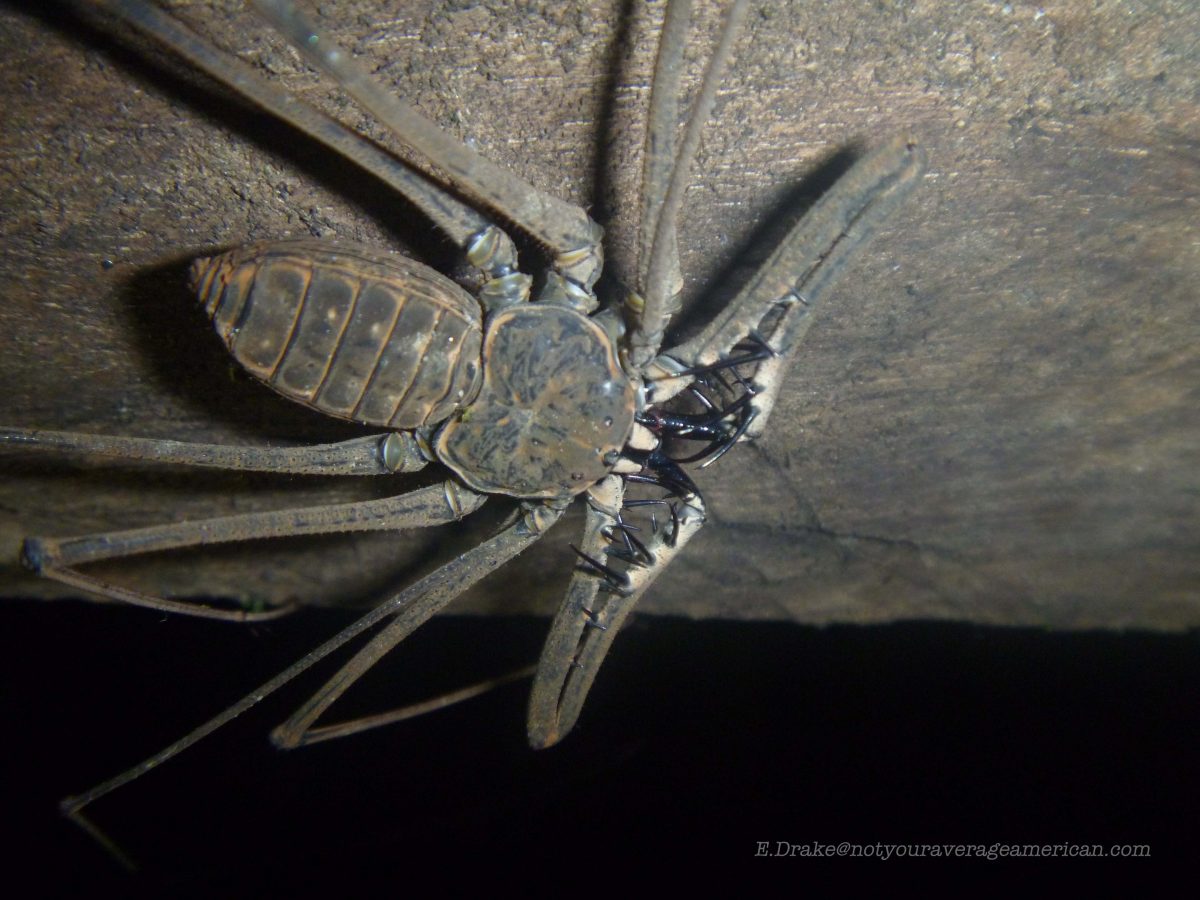
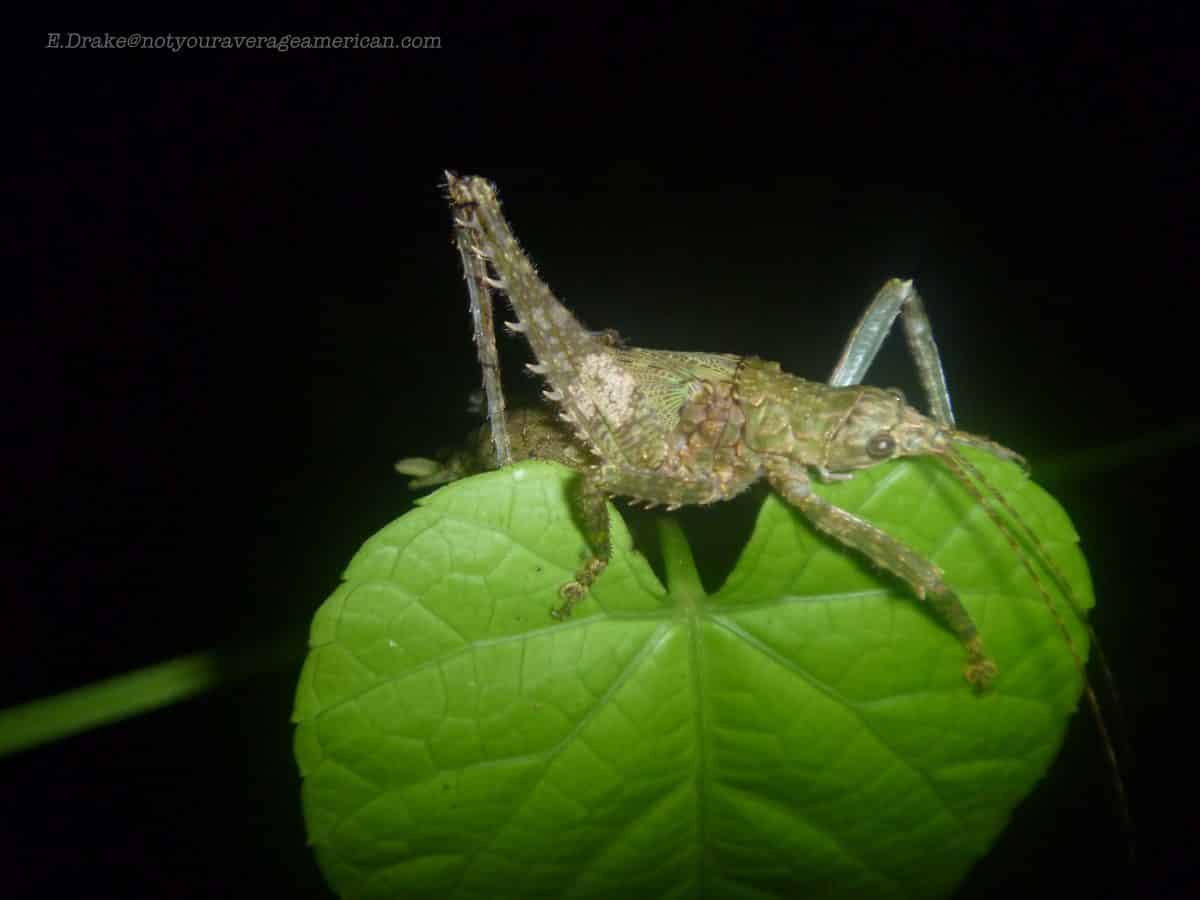
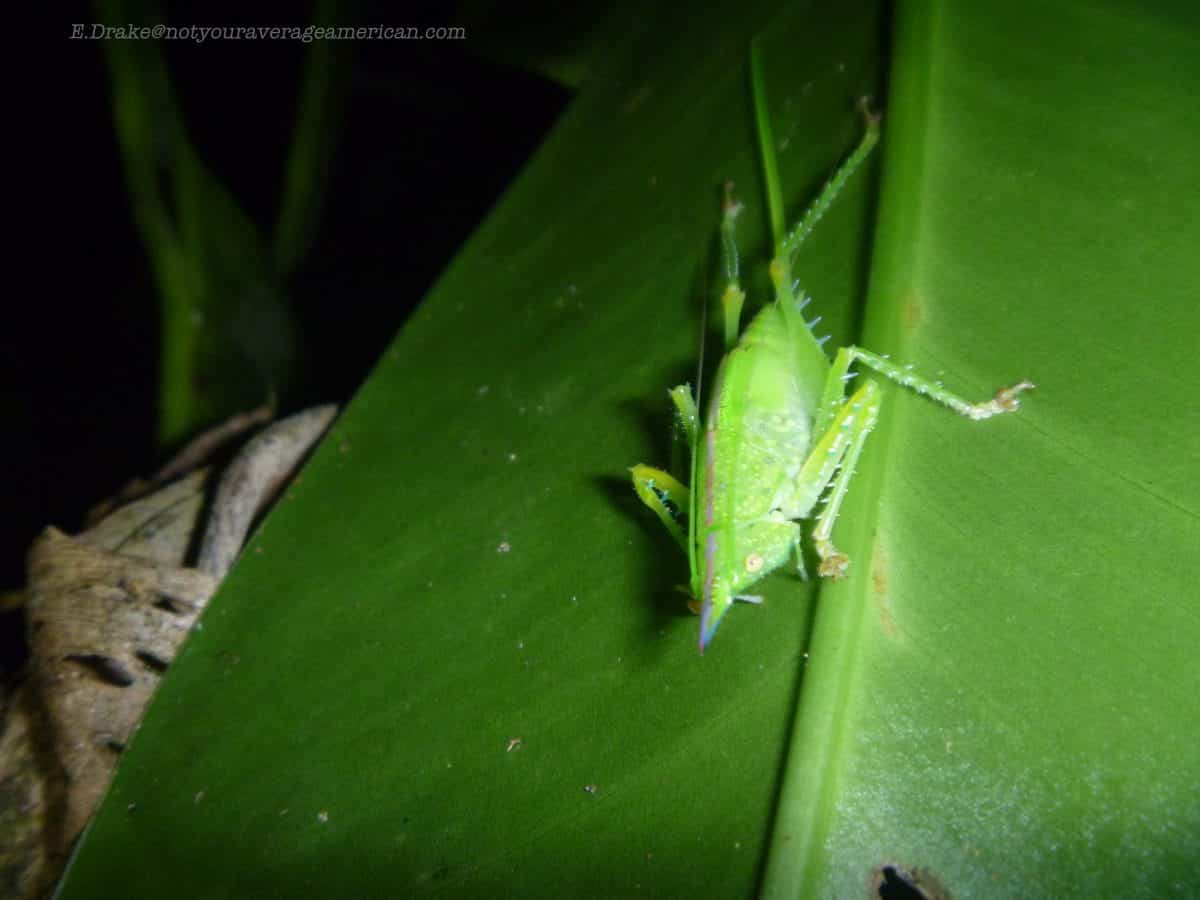
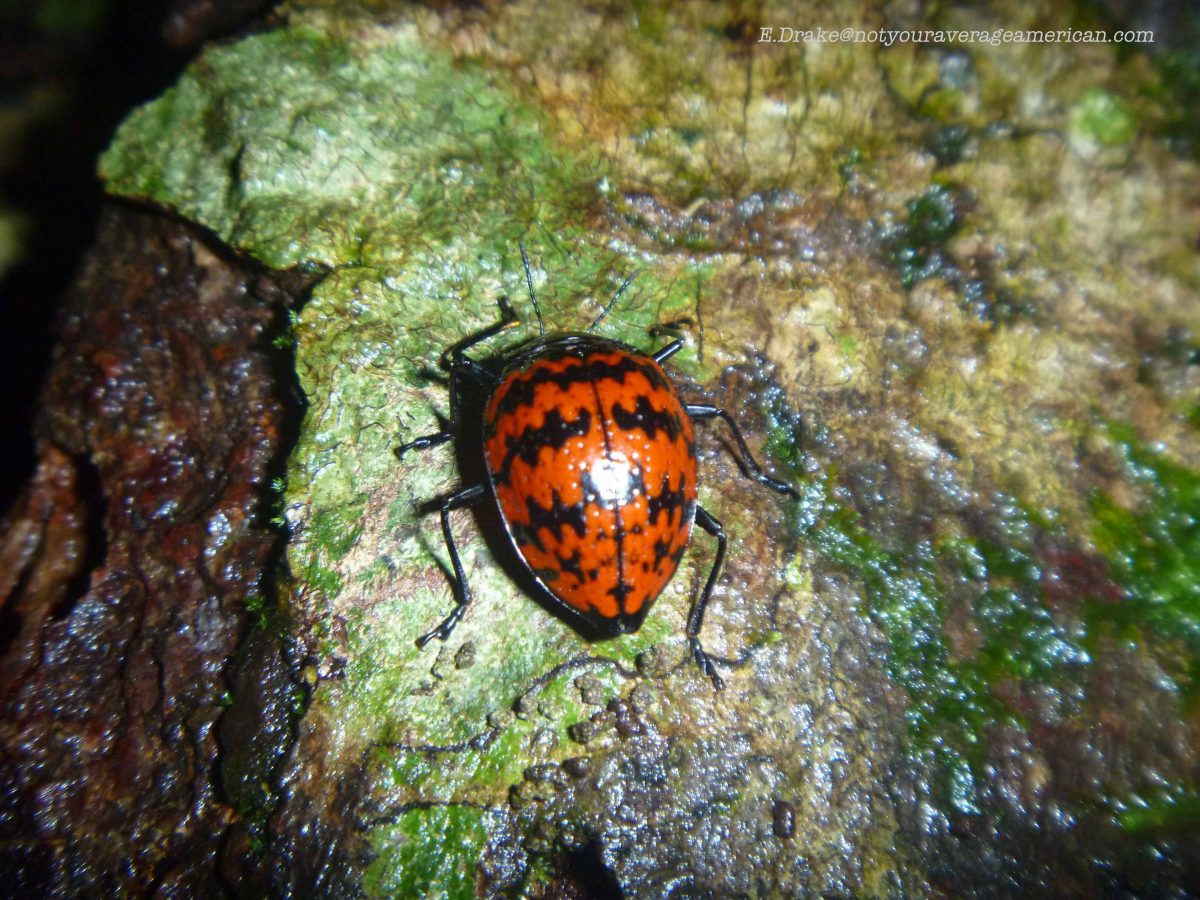
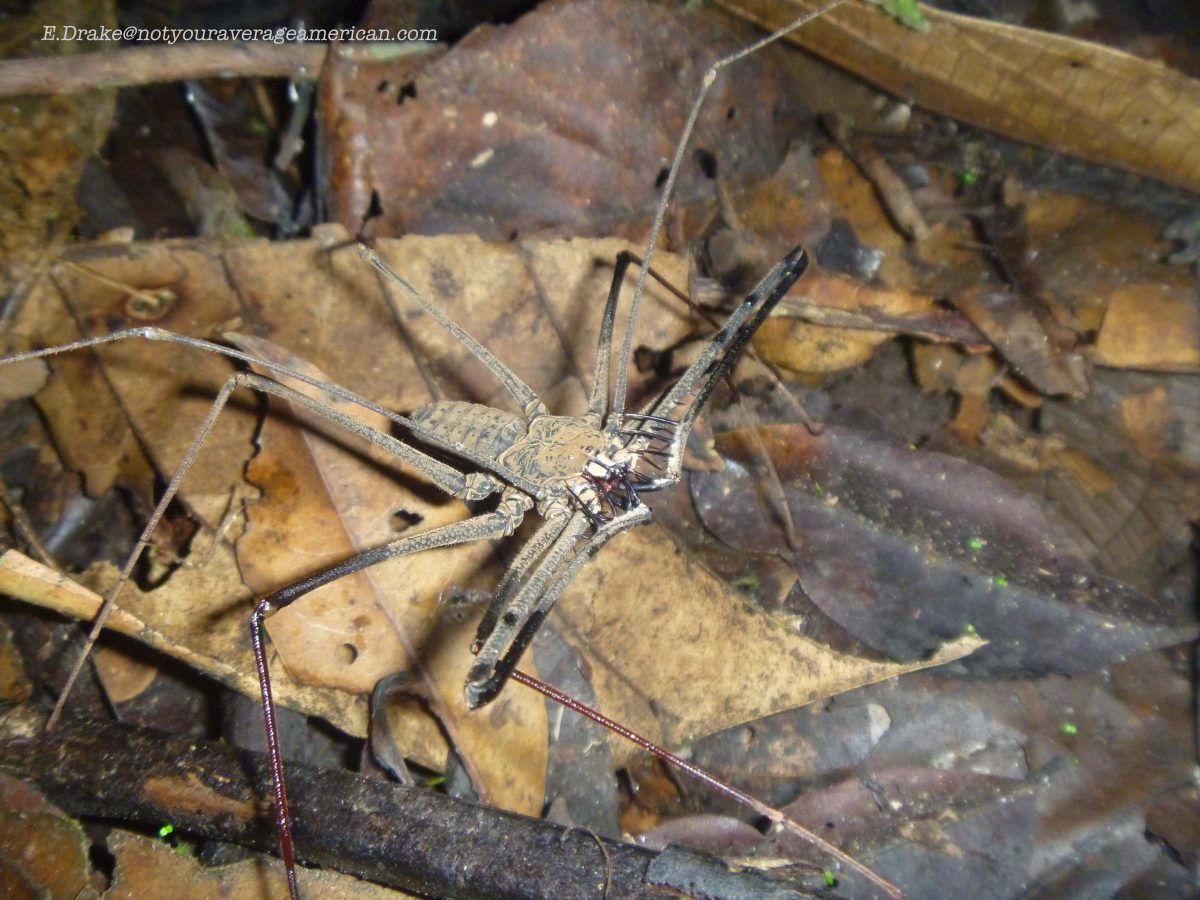
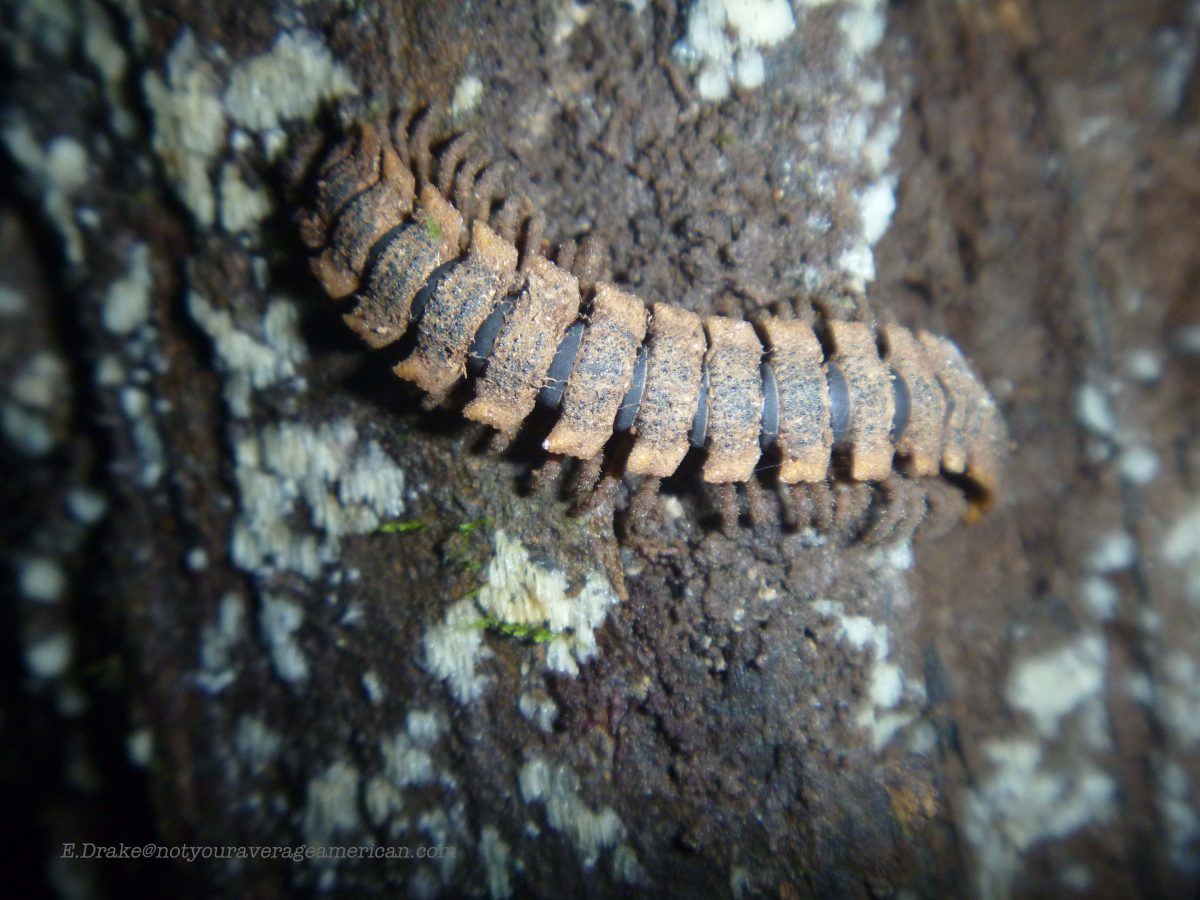
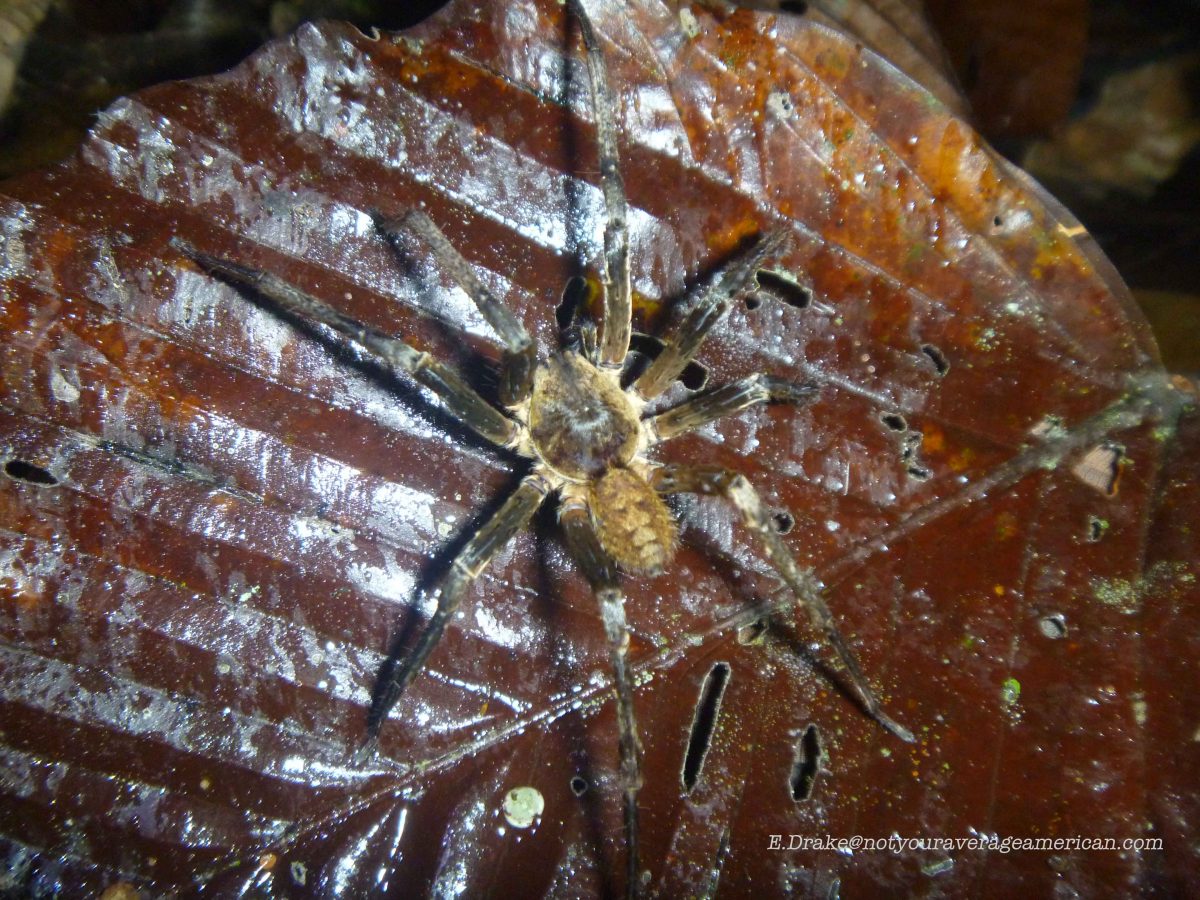
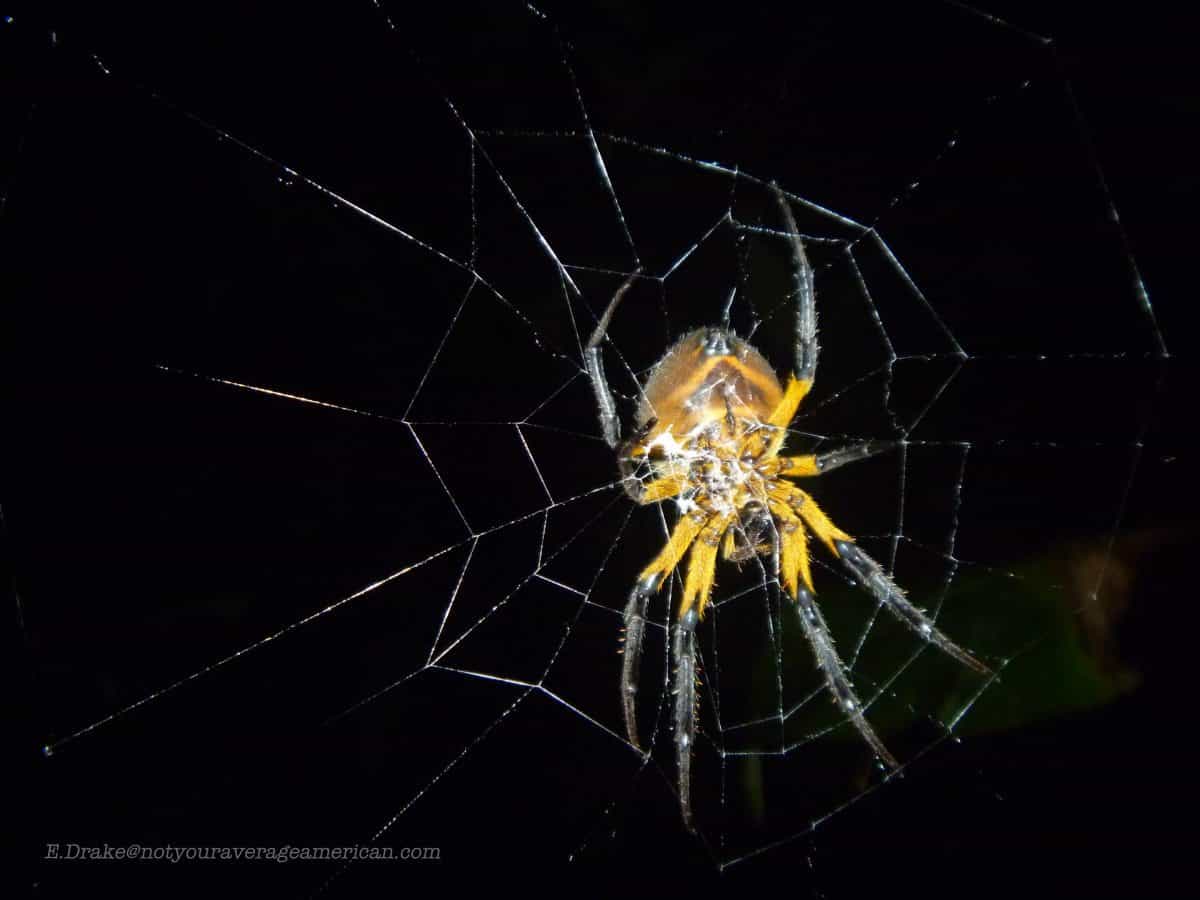
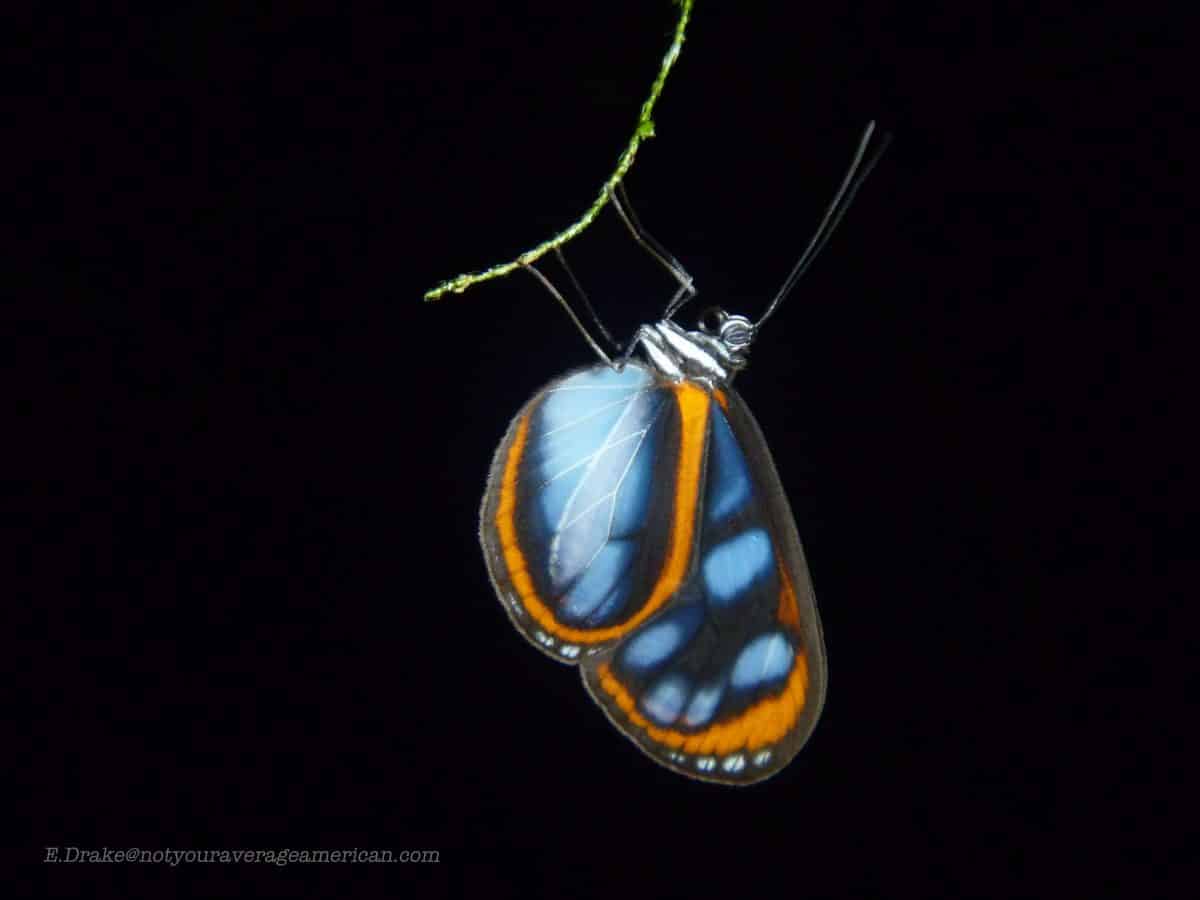
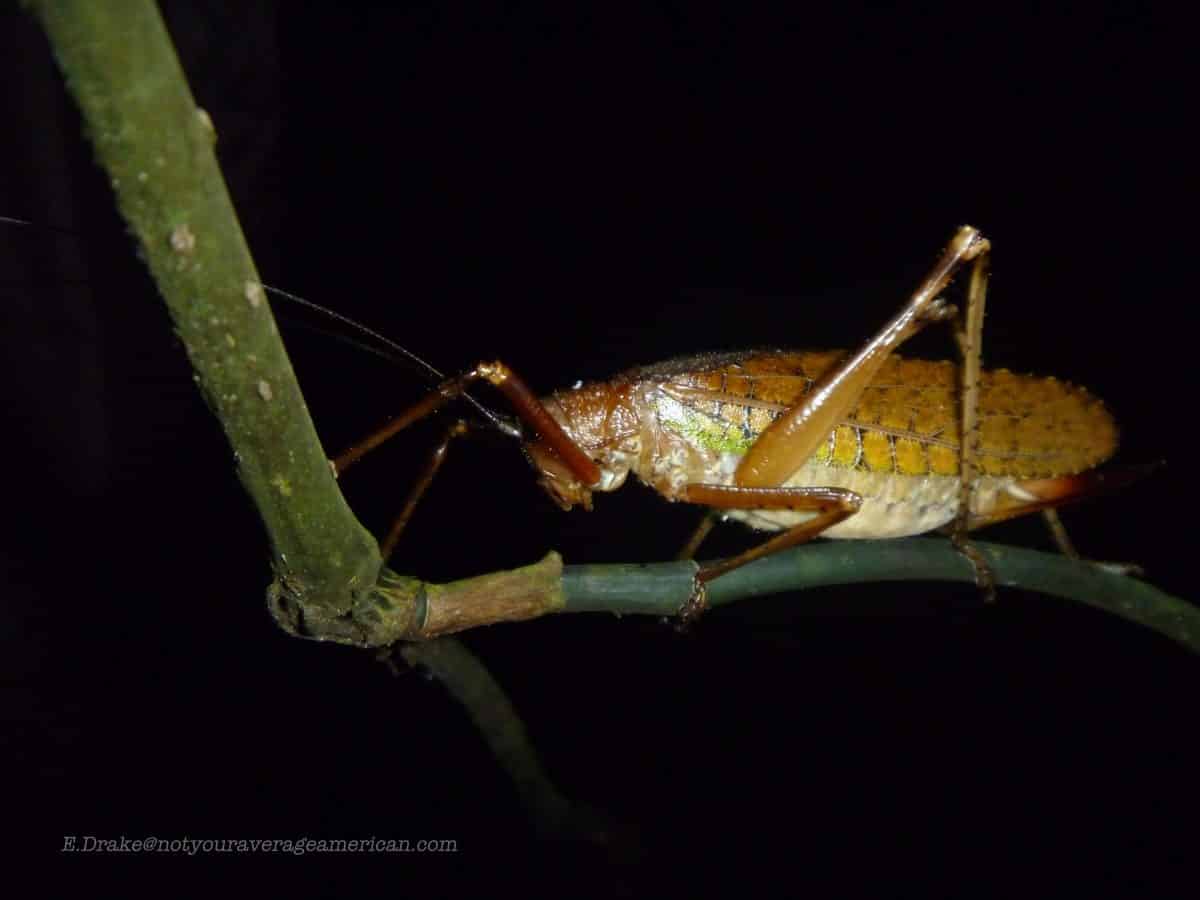
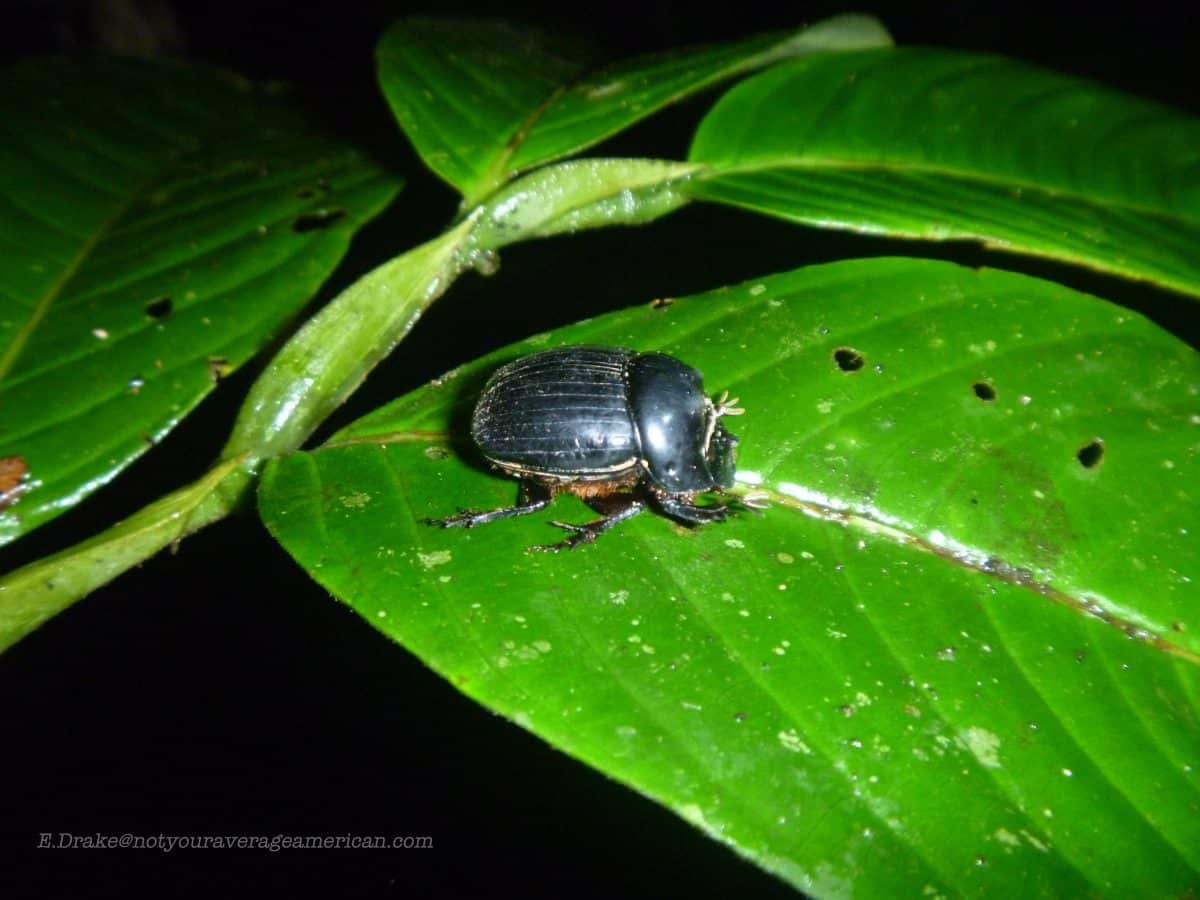
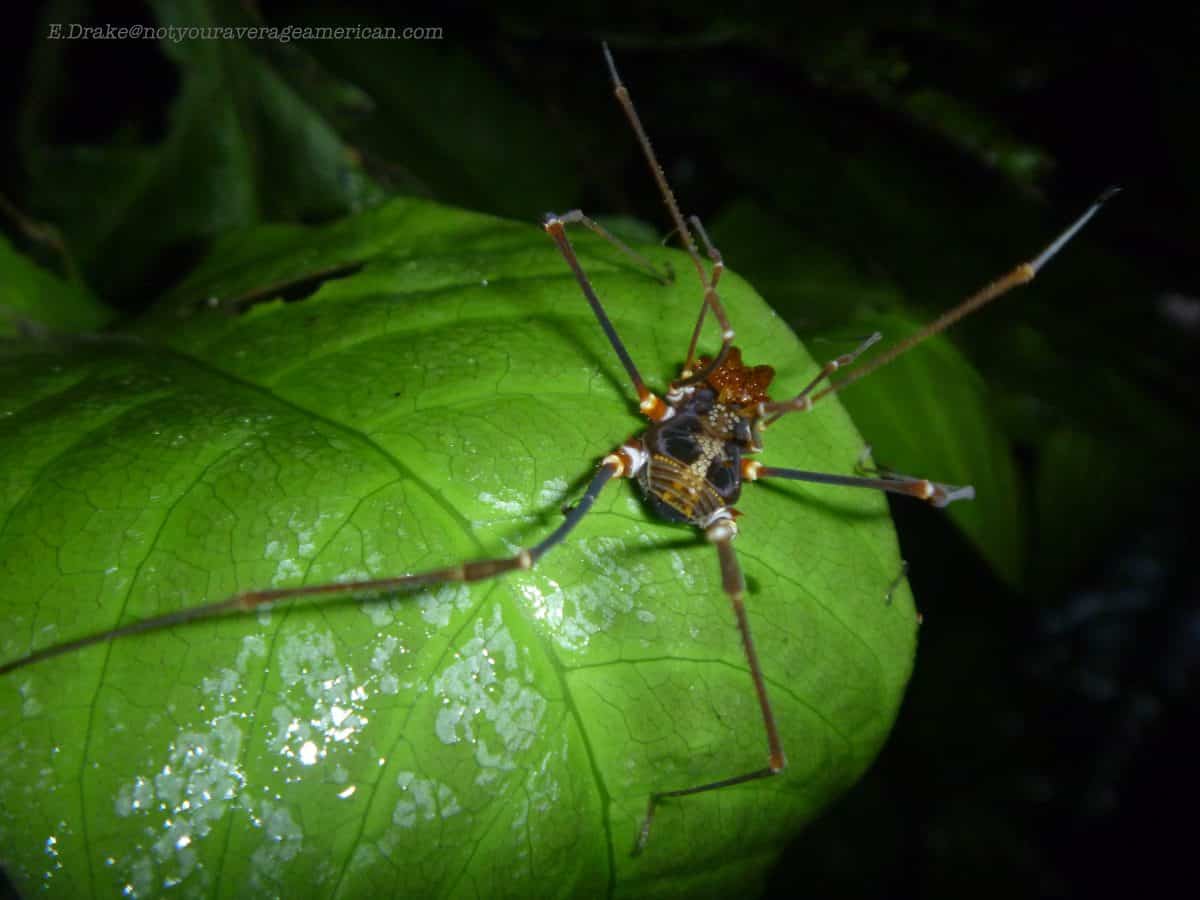
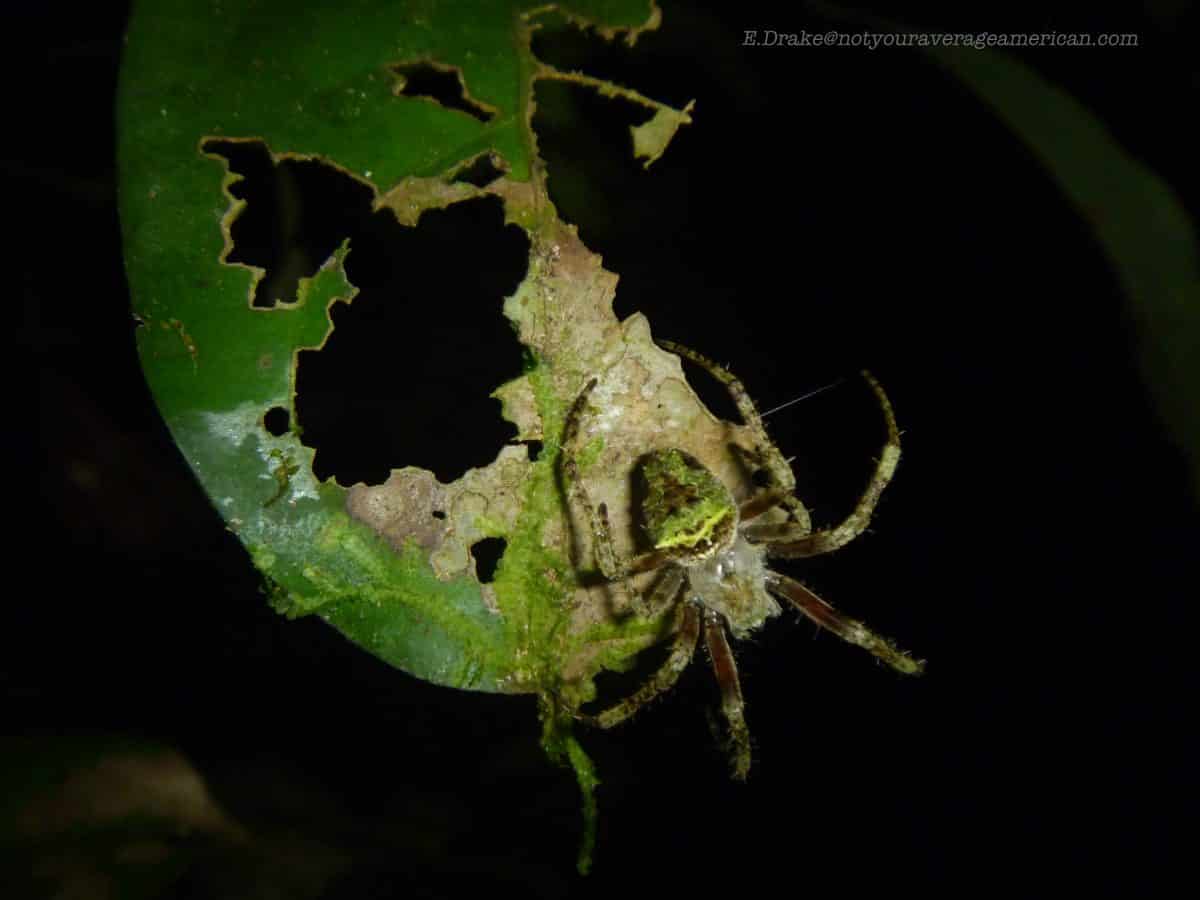
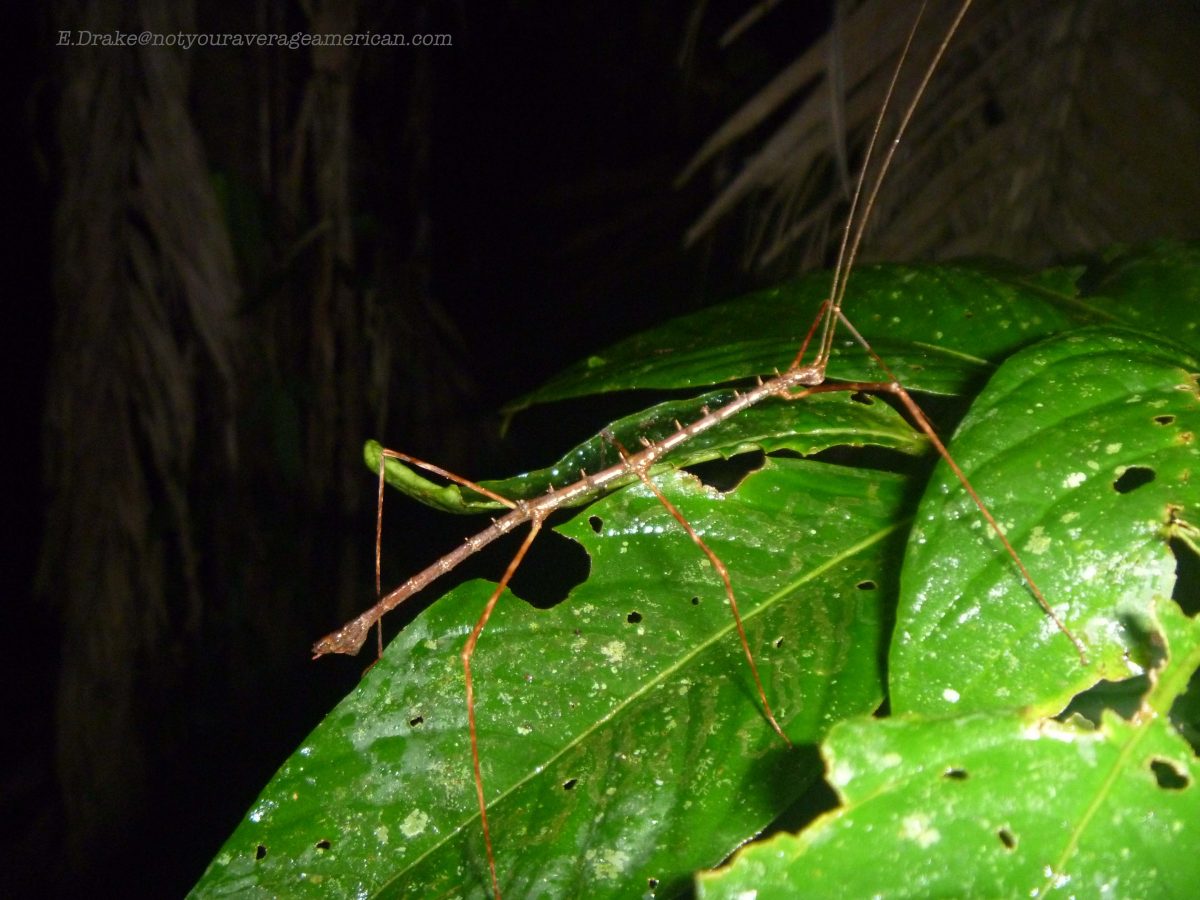
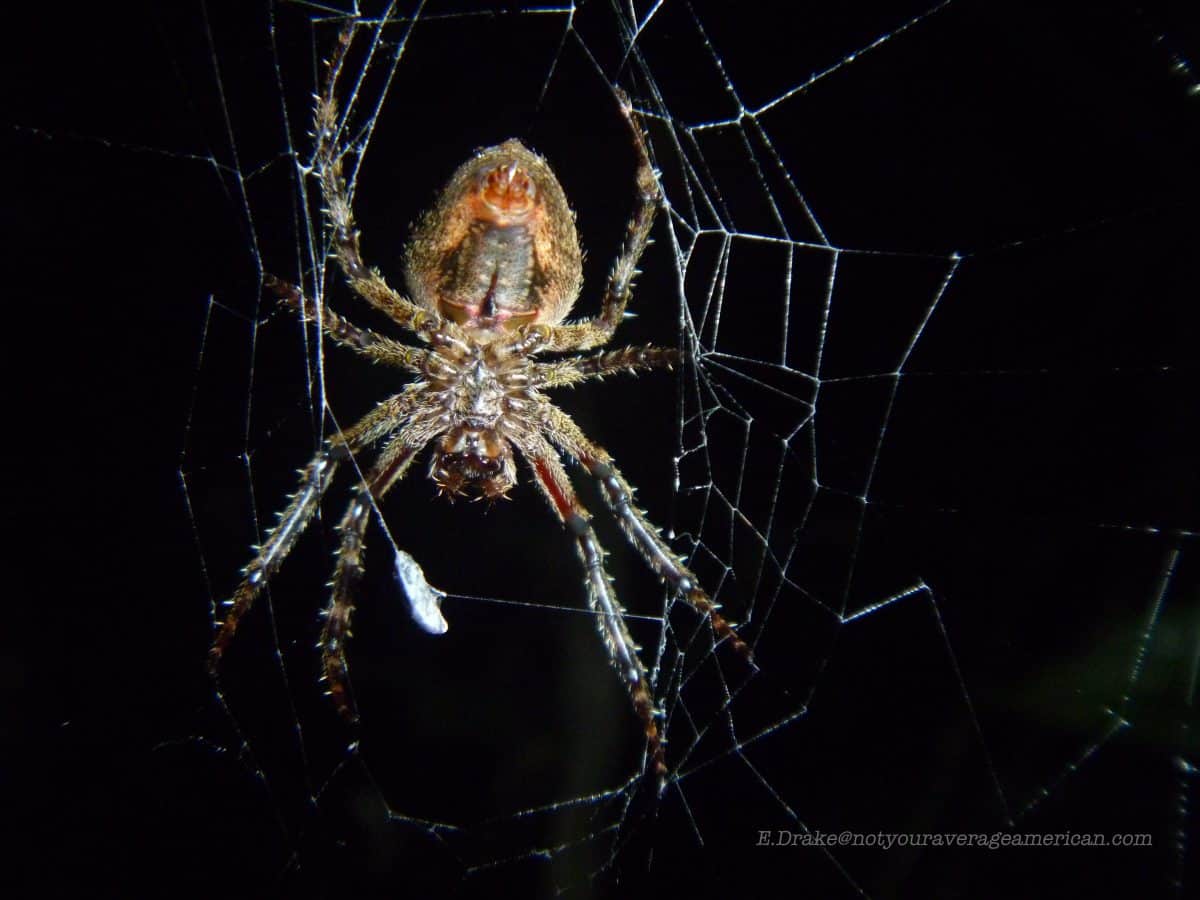

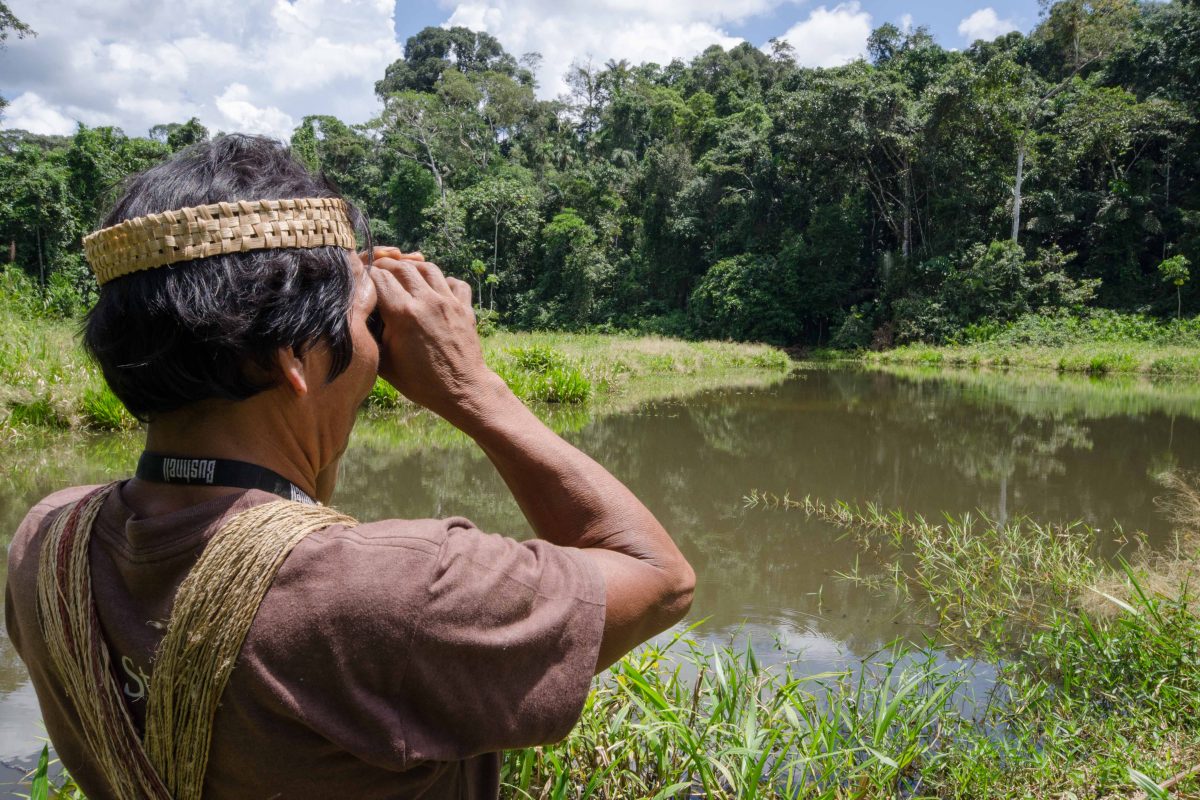
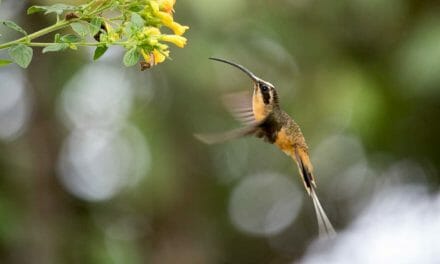
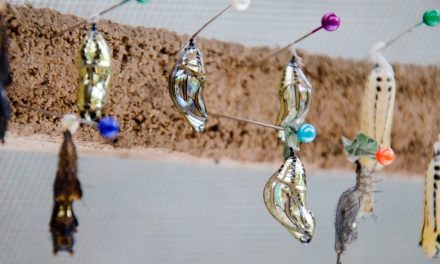






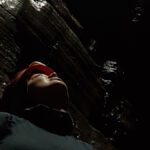

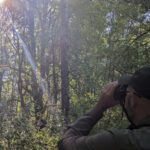
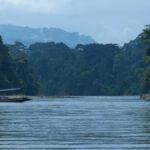

We used to play tag in the overgrown neighboring lot in FL. and would frequently get a face full of banana spider when running heedless from the person who was “it.” Orb weavers always remind me of that time. And those false scorpions (tailless whip scorpion?) have arms that are too long and I am guessing are super quick with their prey.
You just made me remember the black widow spiders at Nellis AFB, NV. They would hover under the cover of the garbage cans, waiting for unsuspecting people to lift the lid and then I’m sure they laughed as we screamed in horror. Then if I smashed one, it would act as if dead until I turned around, then it was gone. Those things had nine lives. Eew.
Amazonia… do you know the names of any of the others?
What a gorgeous orb weaver. On the coast or Amazonia? Thanks AJ!